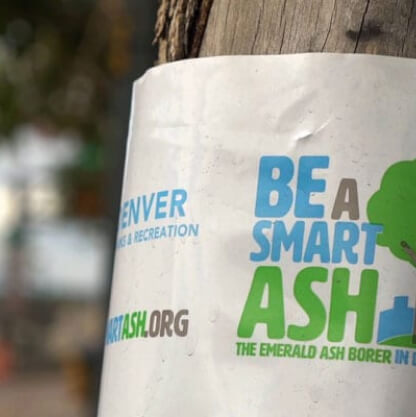Top 5 Takeaways from “Inside the Newsroom: How Investigative Stories Are Made”
Investigative journalism took center stage at “Inside the Newsroom: How Investigative Stories Are Made,” a recent panel discussion moderated by GFM|CenterTable Partner Jeremy Story. Featuring Sandra Fish and Jen Brown from The Colorado Sun, Nathaniel Minor from Colorado Public Radio and Chris Vanderveen from 9News, each journalist shared their process for how they find, research and report investigative stories. Here are five key takeaways from the event:
1. Investigative Journalism Requires Persistent Curiosity
Investigative journalists are relentlessly curious. Many stories begin with a simple question that leads to months, or even years, of dedicated research, data gathering and interviews. For instance, Jen Brown’s series about breakdowns within the child welfare system, “Failed to Death,” and Chris Vanderveen’s “Prone” series are great examples of how isolated pieces of information spurred their curiosity, which led to award-winning investigations that resulted in regulatory and legal changes.
Recommendation: For communications teams, being responsive and transparent with investigative journalists is crucial for brand reputation, especially during a crisis. By the time a reporter contacts you, they have likely already corroborated the information they’re asking about and will know if you aren’t being truthful or are withholding information. Even if the information being requested will negatively affect your organization, facing the situation with integrity by acknowledging it and providing the information requested (along with any relevant context and actions taken to address the issue) will help minimize the impact and position your organization for a faster recovery. You may also consider leveraging their curiosity by sharing additional relevant information to send them other directions to dilute your presence in their story.
2. Data Is a Foundation for Storytelling and Accountability
Data is often where investigative stories begin. Reporters like Sandra Fish and Nathaniel Minor rely heavily on data to uncover trends and validate suspicions, reducing the need to rely solely on personal anecdotes or assumptions. Data-driven stories help journalists prove patterns of behavior. For example, Nathaniel shared how he used badge-swipe data when looking into a police chief’s attendance record and vehicle GPS data when investigating a transportation official’s alleged speeding habit. That data proved tips from human sources that weren’t grounded in facts but rather by anecdotal observations.
Recommendation: When you receive requests for information from reporters, think like a reporter – how might they use that data to shape a story. Consider the most likely scenarios to anticipate the direction of the story and follow-up requests, and then develop messaging to address the issue. And again, keep in mind that transparency and responsiveness strengthen relationships, helping avoid mistrust during sensitive times.
3. Building Relationships is Key
Reporters cultivate long-term relationships with reliable sources to gather information. Nathaniel mentioned the importance of attending local meetings and consistently following up on leads. By showing up, he is able to suss out insider information that others who don’t spend the time to go to the meetings and talk to officials might miss. And while each panelist shared their unique newsgathering style, they all agreed on the importance of building rapport and trust. Chris emphasized that it only takes one instance of being lied to in order to destroy a relationship.
Recommendation: Remember that reporters are people, too. Since investigative journalists rely on their relationships to inform their stories it is rare for them to practice “gotcha” journalism. Nor do they pursue stories because they have a personal axe to grind – they are truly seeking to report impactful, accurate stories. Establishing a good rapport can help ensure coverage of your organization is accurate. It also may afford you the opportunity to provide relevant context important to shaping the narrative of the stories they’re developing.
4. Empathy Supports Good Storytelling
The panel participants underscored the responsibility of journalists to report on sensitive issues with empathy and integrity. They agreed that powerful storytelling goes beyond the facts to reveal the human impact behind the numbers. Chris talked specifically about how he likes to center stories on the people involved to help bridge the gap between data and readers’ understanding when covering emotionally charged topics like police restraint techniques and wrongful deaths.
Recommendation: Just as investigative reporters strive to center the human experience in their stories, so too should organizations. When handling sensitive issues, keep in mind the people who are impacted and express concern for their experience with authenticity. The general public’s capacity for forgiveness is extraordinary, provided you respond to the situation appropriately.
5. Understand the Newsgathering Process
Understanding the newsgathering process further helps build connections with audiences, which is critical as public trust in news outlets is waning, as Nathaniel shared. Jen Brown added that The Colorado Sun encourages readers to understand how stories develop, which fosters a sense of connection and accountability between the newsroom and its audience.
Recommendation: Pay attention to the type of content reporters cover and how they shape their stories. This will help you anticipate the angles they are pursuing when they come to you for information. Similarly, being transparent with your key audiences can also build trust and loyalty.
Looking To the Future
Looking to the future, the panelists reiterated both the importance and the challenges of investigative journalism as newsroom staffs and budgets are shrinking. However, the rise of new tools, like AI models and large language models (LLMS), presents opportunities for more efficient data handling and analysis, potentially helping journalists do more with less.
Overall, the discussion left the audience with a greater appreciation for the rigorous work investigative journalists put into each story and the impact of their efforts on the community by bringing transparency and accountability to the forefront.



